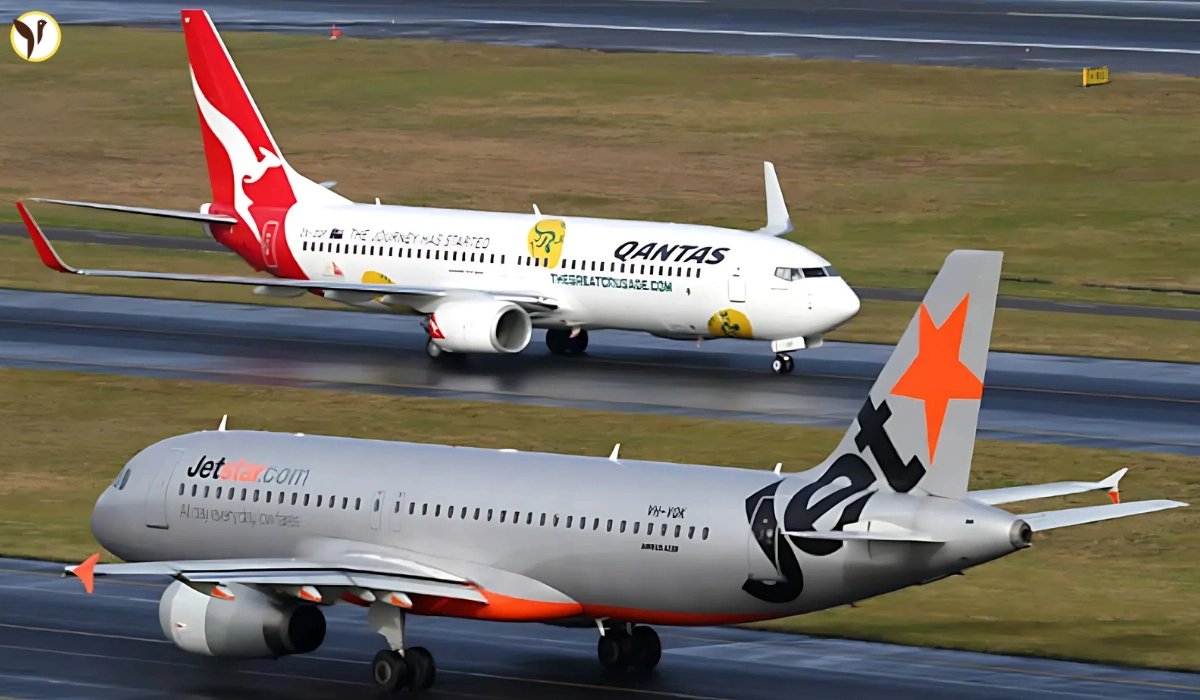Qantas Group has officially announced that it will shut down Jetstar Asia, its low-cost airline based in Singapore, by July 31, 2025. This move marks the end of Jetstar Asia’s two-decade journey in the Asian aviation market. According to Qantas, the airline has been struggling with high operating costs, tough competition, and a challenging business environment in the region. Despite efforts to maintain profitability, the airline is expected to report an annual loss of around AUD 35 million this year. The closure will also come with a financial impact of up to AUD 175 million in one-time costs over two years. Qantas says this strategic decision will help redirect investments into core markets like Australia and New Zealand, where demand and long-term profitability are stronger.
What Led to Jetstar Asia’s Downfall?
The closure of Jetstar Asia is not sudden. It’s the result of multiple long-standing pressures. Costs for suppliers, fuel, and airport usage have gone up sharply—some by more than 200%. This made day-to-day operations far more expensive. Jetstar Asia also faced increased competition from other budget airlines, such as Scoot, AirAsia, and Cebu Pacific. A switch to Terminal 4 at Changi Airport, which has fewer transportation options, added to the challenges. The airline, which mainly served short-haul routes across Southeast Asia, simply couldn’t keep up financially. According to Qantas CEO Vanessa Hudson, the decision to close Jetstar Asia was tough but necessary for the company’s long-term strength.
What Happens to the Aircraft and Staff?
Jetstar Asia currently operates a fleet of 13 Airbus A320 aircraft, all of which will be gradually transferred to Qantas’s other budget operations in Australia and New Zealand. These planes will replace older aircraft and help meet growing demand on domestic and regional routes. While this helps the broader Qantas network, the closure will affect approximately 500 staff members based in Singapore. Qantas has stated that it will offer support through redundancy packages, job-matching services, and possible roles within other Qantas Group airlines. Singapore’s National Trades Union Congress (NTUC) is also stepping in to assist with retraining and job placement.
Impact on Travelers and Routes
Jetstar Asia will continue operating its current routes until the official closure in July 2025. This includes flights across Southeast Asia, including popular destinations like Bangkok, Manila, and Kuala Lumpur. However, one key route will end even earlier: the Broome–Singapore connection, which will stop on July 29, 2025. This route, launched to support tourism in Western Australia’s Kimberley region, was heavily promoted but will no longer be viable. Travelers with bookings after the closure dates will be offered refunds or rebooking options. Customers are encouraged to check with Jetstar for updates and to make alternative plans where needed.
What This Means for Qantas’s Future Strategy
While shutting down Jetstar Asia may seem like a step back, Qantas is repositioning its business to stay financially strong. The company will now focus more on its core market in Australia and New Zealand, where travel demand continues to grow. Aircraft from Jetstar Asia will be used to strengthen domestic routes, replace leased planes, and improve overall fleet efficiency. Qantas is also continuing with Project Sunrise, its long-haul service plan aimed at connecting Australia to major global cities non-stop. In summary, this is a realignment, not a retreat—Qantas wants to build a more focused and sustainable network.
Image Source: australianaviation.com









